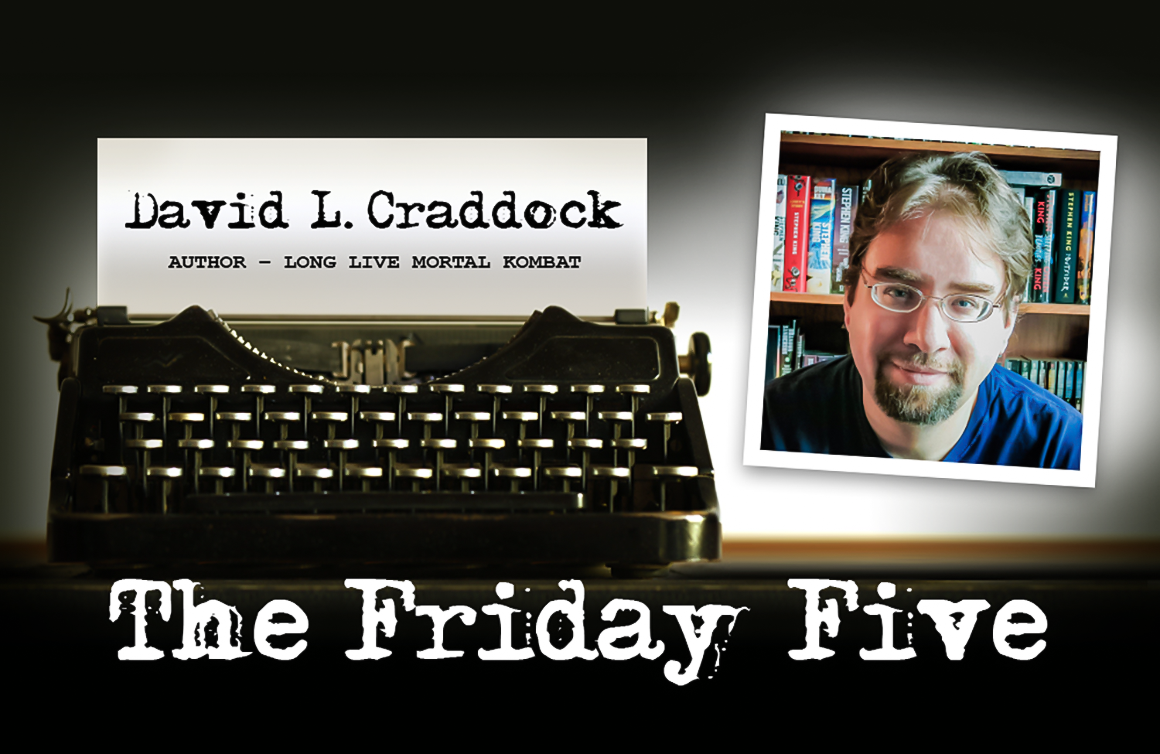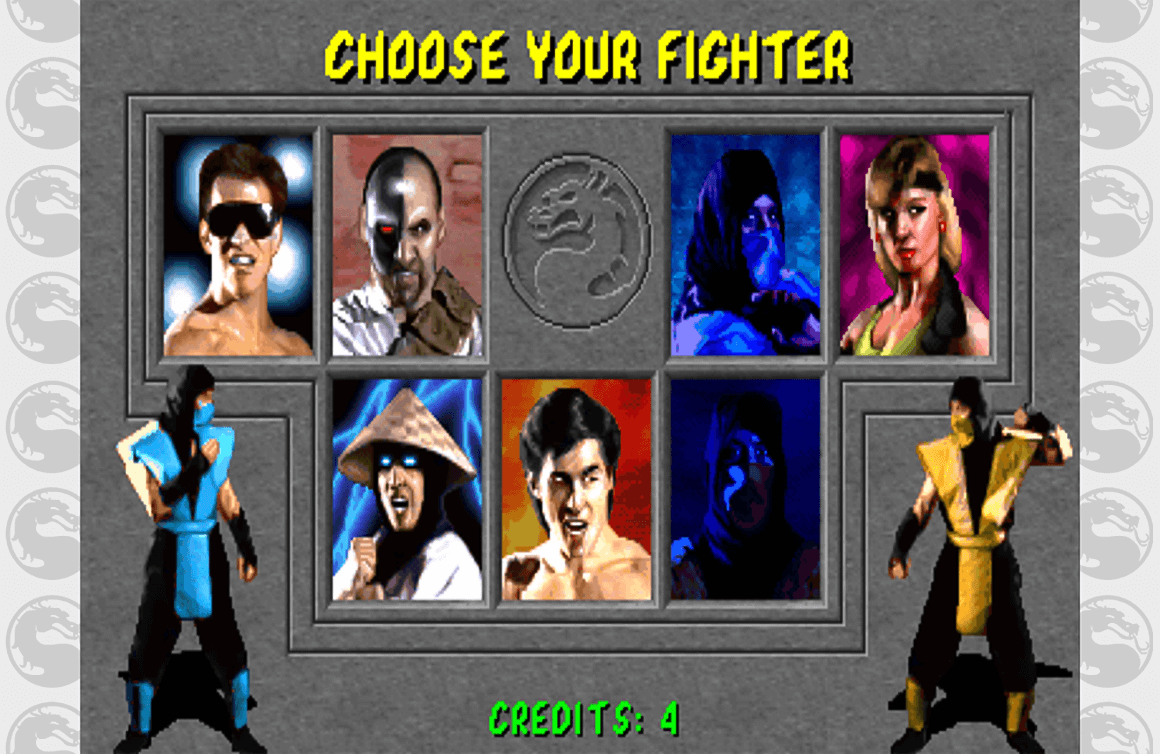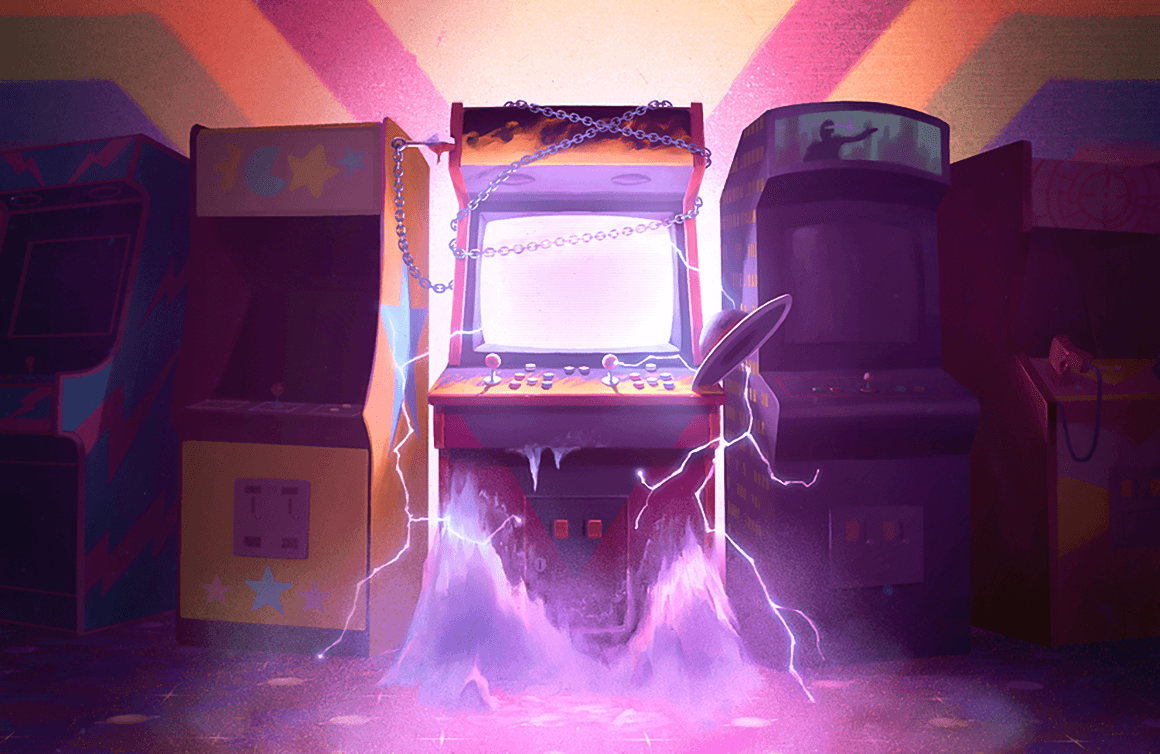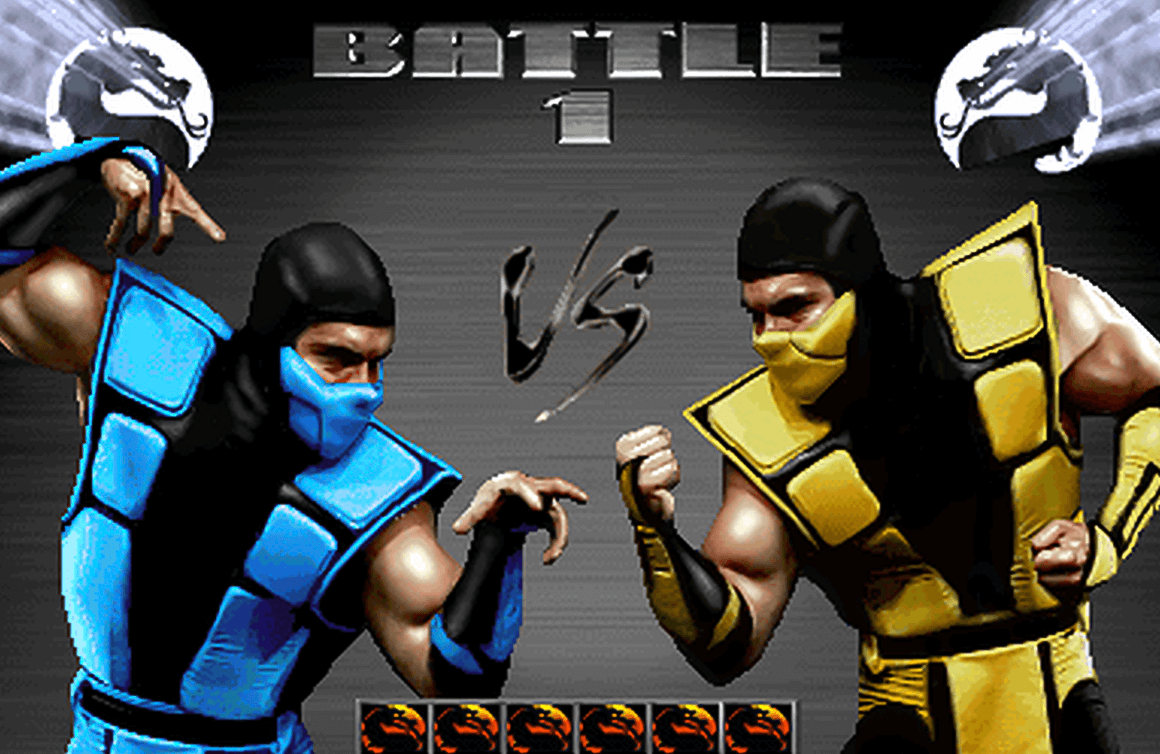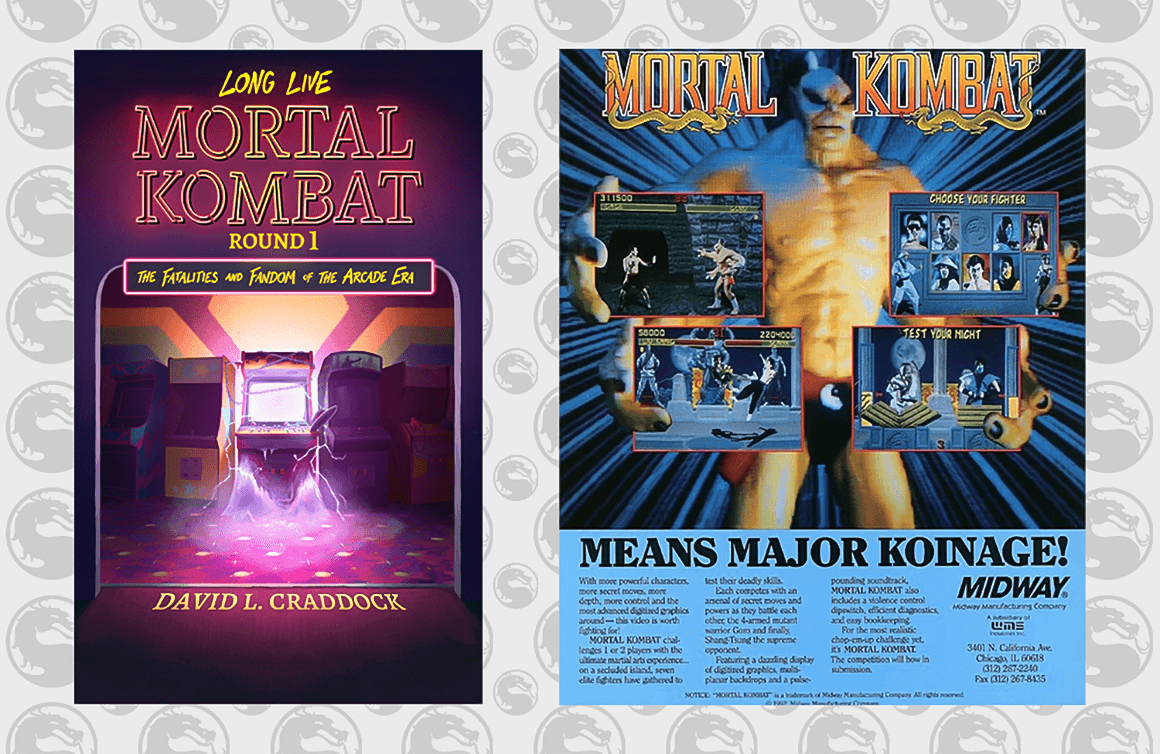What’s your personal connection to Mortal Kombat?
Like a lot of kids in the ’80s and ’90s, I spent any free time I had in arcades as long as I could bum coins off mom or dad.
My parents were divorced, which worked out for me in a number of ways. One of those was that, because they lived in different neighbourhoods, I had two different local arcades and usually two different sets of games to play. But, Mortal Kombat was common between the arcades.
I discovered the game at “dad’s arcade”. I remember walking into the arcade one day and seeing a huge crowd. It was so thick and high with teens and adults who towered over me that I couldn’t see what game they were playing. The game was so popular that the arcade operator had mounted a second monitor above the cabinet — it almost felt like a boxing match. People would end up just watching a giant screen instead of what was happening live because there were so many people there.
I saw Kano and Sub-Zero — I didn’t know them at the time — fight. When Kano won, he ripped out Sub-Zero’s heart. I’d never seen anything like that. Unfortunately, my dad was standing right beside me and he hadn’t seen that before either. He whisked me away. It was forbidden fruit. So of course, I returned to the arcade to play Mortal Kombat whenever I could.
In fact, Mortal Kombat gave me my first writing job. When I was in 6th grade, I was the only kid in my class with the Mortal Kombat Strategy Guide from Gamepro. I went to the school’s Mac lab and wrote out all the codes, as kids called them — all the special moves, all the fatalities. I printed them off and sold them for 25-cents. So, plagiarizing Gamepro’s Mortal Kombat Strategy Guide was my first published writing.
Mortal Kombat has always been there for me but this is something I write about in Long Live Mortal Kombat: Mortal Kombat sometimes leaves its fans. Mortal Kombat 4 was like the puberty stage of Mortal Kombat — 3D graphics were new but Mortal Kombat had been around for a while and it was kind of a late bloomer, it was late in switching to 3D. As a result, Mortal Kombat 4 looked and felt like the same Mortal Kombat we had been playing for 5 years at that point. It was also really awkward and gangly as a 3D game with the awkward 3D graphics from that time period that were everywhere. I didn’t realize just how poorly it sold until I got to talk with Ken Fedesna, who was the general manager at Midway Games. He opened his notebooks to me — he took minutes in every meeting at Midway. He said Mortal Kombat II sold around 28,000 machines but Mortal Kombat 4 sold only 3,900. That is quite a drop in popularity. That dovetailed with things like the Mortal Kombat: Annihilation movie, which was complete garbage. There was also the Mortal Kombat: Special Forces game from Playstation, which was also bad.
Mortal Kombat took hit after hit. It disappeared for about 5 years until the Mortal Kombat: Deadly Alliance game in 2002. I remember being super excited for it. As a Mortal Kombat fan, when the next one comes out, I will be there. The release of a new Mortal Kombat game every couple of years still gets me as excited as it did when I was 10.

What makes the history and influence of Mortal Kombat a compelling story?
That’s a great question. I think there are several factors.
First of all, the game was part of the resurgence of arcades. The Golden Age of arcade games was in the late 1970s to early ’80s, before the North American game market crashed. Arcades were still kind of there, but before then, every sandwich shop, pizza place, and laundromat had two or three games. After the market crashed, the machines weren’t earning money so businesses sold them. Then Street Fighter came along in 1991 and not only helped revive fighting games — which had never really been codified before then — it helped revive arcades. It was just like in the late ’70s when businesses of every kind had an arcade game again because of Street Fighter.
I dedicate an entire chapter to the Street Fighter versus Mortal Kombal rivalry. I talked to a lot of players who were arcade rats back then. It could get pretty heated. There were a lot of cultural and stylistic choices in the games that caused people to gravitate to one franchise or the other. When you have only so many quarters to spend, you’ll play what you like and what you know. Street Fighter II was very clean in its presentation and it looked like anime, whereas Mortal Kombat had photorealistic characters, it was a clunker game, and harder hitting. It felt like a genuine American product. It was big, loud, and it played dirty. It was a spectacle. It was made in America and felt engineered to appeal to American audiences. This was at a time when games like Street Fighter II and Space Invaders came from Japan. There was a cultural divide there. Also, if you look at the attract mode of Street Fighter II and you read the bios for a character’s weight, height, blood type — who cares, right? You had Mortal Kombat characters like Kano, who had a laser eye, and Scorpion who, if you saw his fatality, you saw him rip off his mask to find out he was undead. There was a mystique around the characters, they weren’t just boxers broken down in a tale of the tape-type screen. These were characters with their own motivations.
Another contrast to Street Fighter: Capcom iterated on Street Fighter II for 4 or 5 years. During that time, Midway Games was putting out Mortal Kombat sequels that actually continued to story. It was unique for arcade games to have a story because they’re designed to take your money as fast as possible. The manufacturers didn’t want you standing around watching the attract mode to read character bios, they wanted you putting in money. And yet, people were doing that if the arcade was slow. You’d go in, even if you had money, to watch Mortal Kombat‘s attract mode because you wanted to know more about the characters, how they were linked, and what had happened. Street Fighter II was on its third or fourth update and here’s Mortal Kombat II with certain characters returning and looking different, some characters are gone. Where are they? There was a mystique around the mythology that not only didn’t exist with Street Fighter II but also didn’t really exist around any other arcade game.
Anita Sarkeesian, in her series of video essays about masculinity and games, pointed out that storylines that included events such as the kidnapping of a guy’s girlfriend were very trite and sexist. That’s true. But, one of the reasons those scenarios existed was because game designers really didn’t bother to think about it. They just needed some sort of narrative hook for a player to have a reason why they were walking around punching everything that moves. Mortal Kombat was more complex than that. It’s the combination of a mythology that continued from game to game and the American culture embedded within it. If you look at fighting games today, they are derivative of either Street Fighter or Mortal Kombat. Those are really the two pillars.
Mortal Kombat is 30 years old and going strong. That’s a unique thing in an industry predicated on ephemeral entertainment.

You’re writing Long Live Mortal Kombat as a trilogy of books. Tell us about the plan for each volume and why you’ve chosen this format.
I owe this to my wife, Amie, and it dates back about 11 years.
When I wrote Stay Awhile and Listen it was supposed to be one book about the entire history of the Diablo video game series. When I planned the book, Diablo III was not yet out. I started researching around 2007 and Diablo III wasn’t announced until the summer of 2008 and it wasn’t released until four years after that. I was a full-time writer at that point and had been since 2004. I had to hustle, do all this freelance work, drive around to interview people. I felt like this book was never going to come out. Amie suggested I split the book into multiple volumes. I said, “Look, you don’t get it. That’s just not done. You don’t do it. Masters of Doom by David Kushner covers the entire history of id Software and he didn’t split his book. What makes you think I could split mine? That’s preposterous.”
But then I thought about the idea I realized it actually made sense because, especially after Diablo III came out, it seemed obvious to me that each Diablo game in the trilogy was designed in a very different era. Diablo I was developed in an era that was kind of the Wild West for the industry. Diablo II was created when the games industry had been formalized and there were a lot of people coming into the company who had experience at other companies. This is in contrast to Diablo I when a lot of those people had no idea how to make video games and were not involved with video games, they just knew how to draw or how to program and so they were hired. Diablo III was developed with the industry as a kind of capitalistic monolith where it felt a little soulless, like it had been developed by committee.
To me, Mortal Kombat has an even richer history and it predates Diablo by about 6 years. Because of Stay Awhile and Listen, I’ve started to look at franchises in terms of era. Mortal Kombat has the arcade era with Mortal Kombat 4 being a bridge into the third era, which is book 2. And then you have Mortal Kombat vs. DC Universe, aka Mortal Kombat 8, which is the bridge into the competitive era where it returned to 2D gameplay. Mortal Kombat 9 then marked the start of a new era by retaining 3D but also returning to the blood and gore that had been watered down in Mortal Kombat 8 because DC didn’t want to see Sub-Zero rip off Batman’s head.
It also became a staple in eSports, which is a big deal. In talking with Mortal Kombat co-creator, John Tobias, he and Ed Boon never thought about competitive play and Mortal Kombat. Obviously they wanted players at the machine because that’s more money but in terms of things like character balance, they didn’t address those problems until they learned that there were problems. Mortal Kombat 9 and on have been designed for pro players so that NetherRealm Studios, formally Midway, can have their franchise on these grand stages with big money on the line.
That’s 3 eras, 3 books, and there will be more Mortal Kombat books or games, just as there will be more Diablo games. But, I feel like 3 books for each of these franchises is enough, at least for me.

How was your Kickstarter experience? Did you encounter any surprises along the way?
Long Live Mortal Kombat is the third book I’ve funded on Kickstarter.
What I learned from each campaign that was especially important going into this campaign is the importance of advertising. The internet, as you know, is a firehose of content and there’s no way to turn it off. How do you get what you’re making in front of people before the next gush of water from the endless content firehose pulls them over and distracts them?
The way I do it is to try to get samples of the book in front of as many people as possible. I do that by calling on my connections in video game journalism at sites like IGN, Kotaku, Polygon, Ars Technica, and Shacknews to work out arrangements. I give them a free chapter excerpt and in return, they get free traffic to their sites. I’m pretty well known at all those sites. It’s nice for them because they don’t have to pay a freelancer to write something unique and it’s nice for me because I’m not paying for the promotion.
I always make sure to coordinate the chapter excerpts so that they go live on the morning the Kickstarter goes live because that day-one traffic is so important. Sure enough, with Long Live Mortal Kombat, I did podcast appearances, video interviews, and chapter excerpts. With all of those hits over the first two or three days, Long Live Mortal Kombat was funded within the first 72 hours. It worked out pretty well.
I was a little surprised — this is going to sound arrogant and I don’t mean for it to — that it took 3 days because last year I used Kickstarter to fund a book titled Monsters in the Dark: The Making of X-COM: UFO Defense. X-COM is popular but nowhere near as prolific as Mortal Kombat and that funded in 24 hours. It just goes to show that you can never really predict what’s going to hit, when it’s going to hit, or how hard.
I hosted the Kickstarter first and the opportunity to go to Indiegogo was was extended to me. Indiegogo has a program for people who have successful campaigns on other platforms where you can just import your existing campaign to their platform. It will show the same amount of money raised on the other platform while continuing the crowdfunding. Rather than setting it for 20, 30, or 40 days, I can just turn off the campaign whenever I want. It’s pretty convenient because rather than having to build another crowdfunding campaign from scratch — which is exhausting — I just copy and paste, they approve it, and then it’s live.
With crowdfunding campaigns, all you can do is be organized, be prepared, put it out there, and hope that your content speaks to people. I’m lucky that mine did — whether it takes 3 days or 3-4 weeks to fund a campaign, it gets funded and that’s what’s important.

Where are you in the publishing process? Where can people buy the book?
It’s been edited and now I’m tightening the last screws.
I’m trying to catch any typos or grammatical errors that sometimes slip through the cracks. The book is over 210,000 words, it’s pretty hefty. I wouldn’t expect any editing team to catch everything. I probably won’t catch everything, either, but we want to do our best. Our next step is ordering proofs. Once those are approved, we will begin to print orders and ship them to the backers.
Pre-orders are live right now on Indiegogo. The book will be available for purchase through bookstores and online retailers in October, which is the month of Mortal Kombat‘s 30th anniversary.

We’re sneaking in a bonus question: who is your favourite Mortal Kombat Character?
My favourite character is definitely Princess Kitana. She’s been around since Mortal Kombat II and is one of the most important characters in the mythology. I’ve always liked her.
I think about being raised by a single mom who did everything and then some — she was going to school, working, helping my sister and me with our homework. My mom would record herself reading the Berenstain Bears books so that Debbie and I could listen on nights she wasn’t home before we went to bed. She’s the first audiobook narrator I became a fan of, I guess.
I’ve always been drawn to writing but also to strong female characters in media I enjoy. Kitana is just a badass, gameplay-wise — she has crazy-good combos that do a lot of damage. She’s the whole package.

Learn more about Long Live Mortal Kombat on the book’s dedicated website. You can also discover more of David’s work on his website.

